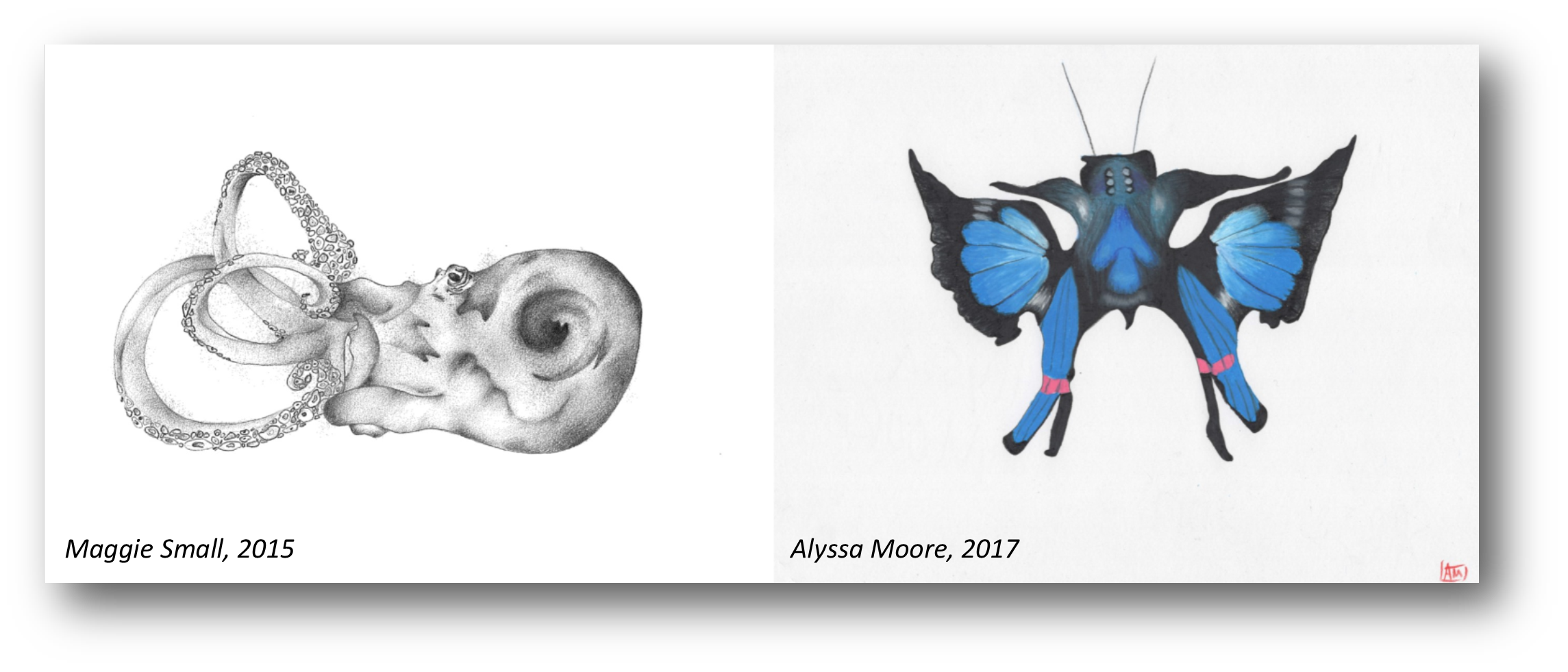Winning Entries

Scientific Discovery Through Art
Before the advent of film and digital media, drawing was one of the primary methods for documenting newly discovered anatomical details. Indeed, many early scientific pioneers were also great artists, with Leonardo Da Vinci and Ramon y Cajal (father of neuroscience) being prime examples. Even today when technology allows for an unprecedented capture of anatomical details, artistic renderings of human anatomy are still an important part of discovery, especially for newcomers to the field. The process of reproducing physical structures, whether in faithful or abstract form, creates a deeper perspective of the macro and microstructure than can be achieved by print or photographic media alone.
To honor the long-standing relationship between art and science, I host an annual art competition as part of SLHS 2203, an undergraduate course on the anatomy and physiology of speech and hearing. Students are invited to submit artwork of any form for extra credit, with the winner being selected by classroom vote.
The winning entries from 2015 and 2017 are featured above.
- 2015: The inner ear rendered as an octopus
- 2017: The sphenoid bone rendered as a colorful moth
Other notable entries include:
- original song inspired by the cochlea
- a 3D candy larynx
- the "cakelea": a cake of the layered, spiral structure of the cochlea (inner ear)
- a knitted esophagus that doubles as a bracelet
- a diagram of the middle ear bones positioned to resemble yoga poses
Notable Artists in Neuroscience and Hearing Sciences
Santiago Ramon y Cajal: Recipient of the Nobel Prize in Physiology or Medicine 1906, which he shared with Camillo Golgi, for his work to describe the microstructure of the nervous system. His detailed drawings of neurons helped to define modern neuroscience, including the notion that the nervous system is comprised of individual contiguous cells. Selected drawings are on display at the NIH campus.
Peter Dallos: A trailblazer in the molecular and cellular bases of mammalian hearing. His work led to the discovery of prestin, a motor protein within outer hair cells that provides the somatic motor of the cochlear amplifier [link]
Arnold Starr: Pioneer of the auditory brainstem response technique who was instrumental in defining auditory neuropathy, a neurological hearing disorder [link]
Related links:
- Scientific American: The case for drawing in science
- Browse the art collection of the Royal Society, the world’s oldest scientific academy
- The Society of Neuroscience Art of Neuroscience Competition